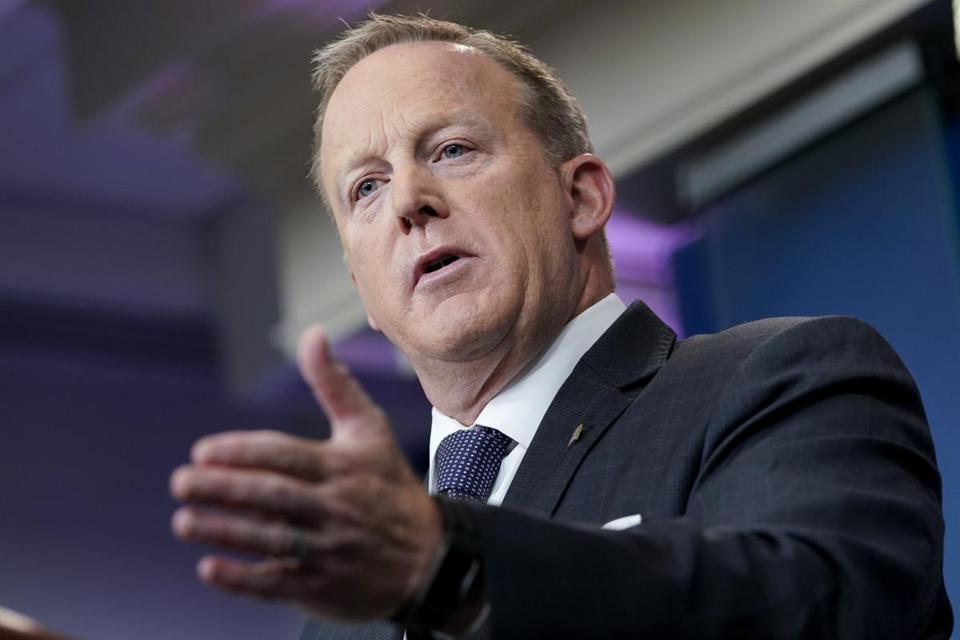
Peter Zeihan: Europe Goes Nuclear
We’ve got two major developments in Eurasia. We’re talking about Ukraine disabling two ships in the Caspian Sea and Poland getting EU approval to build…
Thought Leader: Peter Zeihan

By Sean Spicer
(The Hill) – A year ago this week, Republicans — led by Donald Trump and Mike Pence— dominated the 2016 election, up and down the ballot. Despite public polling and the predictions of media pundits, the Republican investment in crucial data and field operations gave the GOP the edge in 2016, and it’s on pace to do the same during the 2020 election.
Candidates, and the message they take to voters, are at the core of any campaign. However, the most precious assets of any campaign are the candidate’s time and money. An effective data and ground operation maximizes both of those. It was Donald Trump and his message that won the 2016 election — but it was the Republican National Committee’s data and ground game that ensured his time and money were maximized.
The George W. Bush campaign took data and field efforts to a new level in 2004 with the advent of the 72-Hour Task Force and voter micro-targeting. The task force was an effort to get out the vote through volunteer work in the remaining 72 hours of the election. Micro-targeting, meanwhile, used data on voter preferences and behavior to identify patterns and shape campaign outreach strategy.
The Barack Obama campaign took these advances a step further in 2008 by organizing and using data on a much more individual level, targeting key voting blocs to boost turnout. By 2012, the RNC had recognized that those efforts served a single campaign well but would not necessarily help an entire party. Instead, the RNC invested more than $100 million in data and field operations to build an enduring capability that would bolster candidates up and down the ballot.
That crucial investment was not easy to make at the time. The RNC found itself more than $20 million in debt in 2011, with no field staff and an atrophying data and digital operation. This is no longer the case: the RNC has broken fundraising records for a non-presidential year — with no debt — and now invests 30 percent of its budget into its data program.
Interestingly enough, it is now the Democratic National Committee that finds itself in a precarious situation. After eight years of neglect by party leaders, the DNC is effectively bankrupt and unable to fund the ground or data operations it needs to compete.
Republicans control a record 67 of the 98 partisan state legislative chambers in the nation (68 percent), more than twice the number (31) in which Democrats have a majority. There are currently 34 Republican governors, 15 Democrats, and one Independent. The 2016 elections saw Republicans reclaim the White House for the first time in eight years, grow their majority in the U.S. House of Representatives and maintain their majority in the Senate.
The RNC has out-raised the DNC by more than $50 million this year, largely fueled by small-dollar donors. It has more than $44 million on hand, while the DNC has $7.1 million and debt of almost $4 million. Simply put, the DNC is not raising the money it needs to make key investments and win elections.
The 2016 election was decided by 107,000 votes scattered across three states. States like Wisconsin, Minnesota, Pennsylvania and Michigan voted Republican for the first time in decades. In the closing days of the Trump campaign, the data program ensured time and money were spent effectively by placing candidates and political ads in the right areas. It was the data that showed Trump’s message resonating in states that had eluded previous GOP candidates. It was the data that ensured the right mail piece, the right ad at the right time, were delivered. It was the thousands of staff on the ground that contacted voters who had a history of voting early to get them out early, who likewise ensured voters who got an absentee ballot actually sent it in, and that same group also followed up on Election Day with those voters who had a history of in-person voting on Election Day. It was the combination of both the data and ground game that targeted the right streets in the right neighborhoods in the right counties in these states. Voters living in the same household could likely be served up different ads at different times, depending on whether they had a tendency to vote early or on Election Day, and depending on what issues and messages persuaded them.
What had been a scatter-shot approach to a group of potential voters in the past had become a surgically targeted operation. The past election cycle saw the RNC move beyond micro-targeting to a system in which every voter was assigned a score and customized profile, allowing our party and candidates to target voters with accuracy never before seen. Knowing where to best spend the candidates’ time and money clearly made a crucial difference in the final days.
As Hillary Clinton said at the Code Conference last May: “I set up my campaign and we have our own data operation. I get the nomination. So I’m now the nominee of the Democratic Party. I inherit nothing from the Democratic Party. I mean, it was bankrupt, it was on the verge of insolvency, its data was mediocre to poor, nonexistent, wrong. I had to inject money into it — the DNC — to keep it going.”
Sen. Bill Nelson (D-Fla.), facing a tough re-election fight in Florida, told party leaders that “Democrats desperately needed to catch up on field staff in Florida, especially in the wake of the presidential and Senate race results last year that saw Republican-leaning voters flood the polls and took even plugged-in Democrats by surprise.”
A year-round investment in data and field activities allows a party to create a comprehensive understanding of each individual: Do they vote early or on Election Day? Which issues do they care about, and which of those motivate them to vote? Who are their key influencers? This information then guides key campaign decisions, ranging from the places that candidates spend their time to the content of key digital and broadcast advertisements.
Candidates for federal office can raise up to $2,700 per person, while party committees can take in $339,000 per person in a year. The enormous cost of data and field operations simply makes it cost-prohibitive for any single candidate to perform that function.
Only the RNC and DNC can raise that money and legally coordinate with their candidates. The 2016 election not only proved that mechanics matter, but also that the GOP is the only party making the proper investment in resources that will be critical for victory in 2020.
Peter Zeihan: Europe Goes Nuclear
We’ve got two major developments in Eurasia. We’re talking about Ukraine disabling two ships in the Caspian Sea and Poland getting EU approval to build…
Thought Leader: Peter Zeihan
Dr. Sanjay Gupta’s Top Health Stories of 2025
From the resurgence of measles to a new way to treat pain, 2025 was a challenge for public health while still offering moments of hope. Sanjay…
Thought Leader: Sanjay Gupta
Ian Bremmer: The state of global conflict in 2025
On GZERO World, Ian Bremmer takes a hard look at the biggest global crises and conflicts that defined our world in 2025 with CNN’s Clarissa…
Thought Leader: Ian Bremmer

